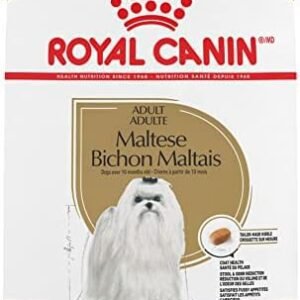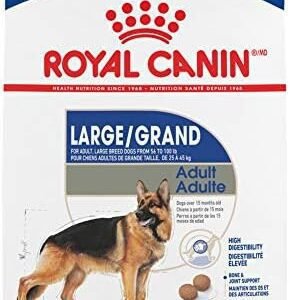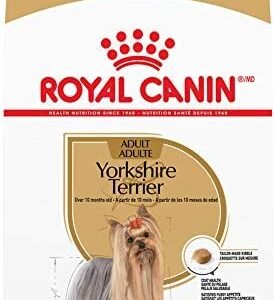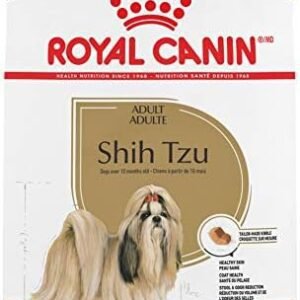Have you ever wondered about the foods your furry friend can enjoy? Our canine companions often share our table scraps, and it’s essential to know which human foods are safe for them. In this article, we will explore a common and versatile staple in many households—white rice—and answer the question: can dogs eat white rice?
White rice, known for its mild flavor and digestibility, is a staple in many cuisines around the world. It’s a comfort food for humans, often recommended for its blandness when recovering from stomach issues. But what about our four-legged friends? Can they partake in this simple and widely available grain?

In the world of pet nutrition, it’s crucial to navigate the fine line between providing our dogs with safe, nutritious food and indulging them with a treat that might not be entirely suitable for their diet. We’ll delve into the potential advantages and disadvantages of feeding white rice to your dog, how to do it safely, and what to do if they happen to consume a portion that’s not safe for them. Let’s embark on this journey to understand if white rice can be a part of your dog’s diet.
Table of Contents
Can Dogs Eat White Rice? The Nutritional Facts
White rice, often praised for its neutral flavor and digestibility, is a staple in many households. But what about our canine companions? Can dogs eat white rice safely? In this section, we’ll explore the safety and nutritional aspects of feeding white rice to dogs.
Safety of White Rice for Dogs
Let’s begin by addressing the safety concerns. White rice is generally considered safe for dogs. It’s neither toxic nor dangerous, making it a go-to choice for pet owners seeking a mild, easily digestible option for their furry friends. In fact, some dogs may even find the taste of plain, cooked white rice quite enjoyable. It’s the simplicity and blandness of white rice that often makes it a suitable choice for dogs, especially when they’re experiencing digestive issues.
Nutritional Value of White Rice
White rice is a carbohydrate-rich grain that offers certain nutritional benefits for dogs. Here’s a breakdown of the essential nutrients found in white rice:
| Nutrient | Amount per 100g |
|---|---|
| Calories | 130 kcal |
| Carbohydrates | 28.7g |
| Protein | 2.7g |
| Fat | 0.3g |
| Fiber | 0.4g |
| Vitamins | |
| – Thiamin (B1) | 0.070mg |
| – Niacin (B3) | 2.690mg |
| – Folate (B9) | 7mcg |
| Minerals | |
| – Iron | 0.8mg |
| – Magnesium | 25mg |
| – Phosphorus | 68mg |
| – Potassium | 35mg |
| – Zinc | 0.6mg |
| – Manganese | 0.707mg |
| Water | 69.92g |
White rice is notably low in fat and cholesterol, making it a suitable choice for dogs with dietary restrictions. It’s also a source of essential nutrients such as thiamin (B1), niacin (B3), iron, magnesium, and phosphorus, which play various roles in your dog’s overall health.
Drawbacks of Feeding White Rice to Dogs
While white rice has its advantages, it’s important to be aware of its limitations when considering it as a part of your dog’s diet. White rice lacks many essential nutrients found in balanced dog food, such as proteins, fats, and specific vitamins. Feeding your dog a diet primarily consisting of white rice could result in nutritional deficiencies and related health issues.
Additionally, the high carbohydrate content in white rice can lead to an increase in blood sugar levels. This is a concern, especially for dogs with diabetes or those prone to weight gain. It’s vital to use white rice as a complementary food and not as a substitute for your dog’s primary diet.
In the following sections, we’ll explore the pros and cons of incorporating white rice into your dog’s meals, along with appropriate serving sizes, and tips for doing so safely and effectively.
How Much White Rice Can a Dog Eat? Finding the Right Balance
When it comes to feeding white rice to your dog, one key word should resonate: moderation. As we delve into the amount of white rice that is safe and suitable for your canine companion, we’ll emphasize the importance of balance and awareness of your dog’s individual needs.

Moderation is Key
White rice should only be a small part of your dog’s overall diet. Treats, including white rice, should not account for more than 10% of your dog’s daily calorie intake. It’s crucial to maintain this balance to ensure that your dog receives the necessary nutrients from their primary dog food.
Start Small and Observe
When introducing white rice to your dog’s diet, start with a small amount and observe how your dog reacts. Just like humans, dogs can have varying sensitivities to different foods. Some dogs may tolerate white rice with no issues, while others may experience digestive discomfort. Pay attention to any signs of allergies, sensitivities, or gastrointestinal distress.
Proper Preparation Matters
Before offering white rice to your dog, it’s essential to prepare it properly. Cook the rice without any seasonings, additives, or sauces. Plain, boiled white rice is the safest option. Avoid adding any salt, spices, or flavorings, as these can be harmful to your dog. The goal is to provide a bland and easily digestible meal.
Consider Your Dog’s Size and Breed
The amount of white rice your dog can tolerate may vary based on their size and breed. Larger dogs may be able to eat more white rice than smaller dogs without experiencing issues. However, it’s essential to adjust the portion size according to your dog’s specific needs. Always consult your veterinarian if you have concerns or questions about portion sizes for your dog’s breed and size.
Appropriate Serving Sizes
Here’s a rough guideline for appropriate serving sizes of white rice based on a dog’s weight:
- Small Dogs (Up to 10 lbs): 1-2 tablespoons of white rice per day.
- Medium Dogs (11-50 lbs): 2-4 tablespoons of white rice per day.
- Large Dogs (51 lbs and above): 1/4 to 1/2 cup of white rice per day.
These serving sizes can serve as a starting point, but it’s important to monitor your dog’s individual response and adjust accordingly. Remember that these portions should complement your dog’s regular diet and not replace it.
In the following sections, we’ll explore the potential benefits of white rice for dogs, as well as the situations where it can be particularly useful. We’ll also address some of the potential concerns and offer tips on how to safely incorporate white rice into your dog’s diet.
What are the Risks of Feeding White Rice to Dogs?
While white rice is generally safe for dogs, it’s essential to be aware of the potential risks and concerns associated with its consumption. In this section, we’ll explore the various risks and issues that may arise when feeding white rice to your canine companion.
One of the primary concerns when introducing any new food to your dog’s diet is the possibility of food allergies. Some dogs may have allergies or sensitivities to specific ingredients, and this can extend to white rice. While food allergies are relatively uncommon, they can occur. If your dog exhibits any unusual symptoms after consuming white rice, such as itching, skin redness, hives, or digestive distress, it’s essential to consult your veterinarian.
Short-term Signs of Food Intolerance
Dogs, like humans, can experience food intolerance. Short-term signs of food intolerance include gastrointestinal distress. If your dog is sensitive to white rice, you may notice symptoms like diarrhea, vomiting, or flatulence. These issues can be uncomfortable for your dog and may signal a need to adjust their diet.
Potential Hazards in White Rice
While white rice itself is not inherently hazardous, it’s crucial to avoid certain components that can be detrimental to your dog’s health. For example, seasoning white rice with salt, spices, or herbs can be harmful. Salt, in particular, can lead to sodium ion poisoning in dogs, which can result in symptoms such as excessive thirst, urination, vomiting, diarrhea, and, in severe cases, seizures or coma.
Signs of Allergic Reactions and Specific Issues
When feeding white rice to your dog, it’s important to be vigilant and watch out for signs of allergic reactions. These can include:
- Skin redness or itching
- Swelling, particularly in the face or around the eyes
- Hives or welts on the skin
- Difficulty breathing
- Drooling
- Vomiting or diarrhea
If your dog exhibits any of these signs after consuming white rice, it’s essential to seek immediate veterinary care. Allergic reactions can be severe and require prompt attention.
Additionally, be cautious about issues related to specific ingredients that might be added to the white rice. For example, if you include onions or garlic in the rice, they can be toxic to dogs and lead to symptoms such as lethargy, weakness, vomiting, and hemolytic anemia.
In the following sections, we’ll provide guidance on how to safely incorporate white rice into your dog’s diet, including appropriate preparation and portion control. We’ll also explore the potential benefits of white rice for dogs and when it can be a valuable addition to their meals.
How to Feed White Rice to Your Dog and Make Mealtime Enjoyable
Now that we’ve discussed the safety and potential risks of feeding white rice to your dog, let’s explore the exciting possibilities of incorporating this grain into your dog’s diet in a safe and enjoyable way. In this section, we’ll share creative ideas on how to feed white rice to your dog and make their dining experience not only nutritious but also delightful.
Versatile Ways to Serve White Rice
White rice can be a versatile addition to your dog’s diet. Here are some creative ways to feed it to your furry friend:
As a Fresh or Frozen Treat: Cook and cool white rice and serve it as a refreshing treat on a hot day. You can even freeze small portions for a cool and soothing snack.
Food Topper or Mixer: White rice can be mixed with your dog’s regular food as a topper or mixer. This can make their meals more interesting and add variety to their diet.
Homemade Treats and Snacks: White rice can be used to make homemade treats and snacks for your dog. We’ll share some recipes and ideas shortly.
Enhancing Your Dog’s Food with White Rice
Feeding your dog white rice can be an excellent way to enhance their meals and make them more enjoyable. Here are some insights into how you can achieve this:
Texture and Flavor: White rice offers a pleasant, slightly chewy texture that many dogs enjoy. Its mild flavor can complement your dog’s regular food.
Digestive Aid: White rice can be particularly helpful if your dog is experiencing digestive issues. It’s easily digestible and can soothe an upset stomach.
Weight Management: If your dog needs to lose weight, incorporating white rice in measured amounts can help control their calorie intake while providing a satisfying feeling of fullness.
- Hydration: The high water content in cooked white rice can contribute to your dog’s hydration, especially if they’re not particularly fond of drinking water.
Recipes and Ideas for Homemade Dog Treats
Let’s get creative with some recipes and ideas for homemade dog treats using white rice:
Rice and Chicken Treats: Combine cooked white rice with shredded, boiled chicken. Form the mixture into small balls and bake them until they’re firm. These treats are protein-packed and sure to please your pup.
Peanut Butter and Rice Bites: Mix cooked white rice with natural, unsalted peanut butter. Shape the mixture into small, dog-friendly portions, and refrigerate until they’re solid. Dogs love the peanut butter flavor, and the rice adds a nice texture.
Carrot and Rice Delights: Cooked white rice pairs well with carrots. Dice or shred carrots and mix them into the rice. You can create small portions and serve them as bite-sized snacks. Carrots are not only delicious but also a great source of vitamins and fiber.
Pumpkin and Rice Cookies: White rice and pumpkin make a fantastic combination. Mix canned pumpkin with cooked white rice, add a touch of cinnamon for flavor, and shape the mixture into cookies. Bake until they’re crisp and ready to serve.
Banana and Rice Popsicles: Blend ripe bananas with cooked white rice and water, then freeze the mixture in ice cube trays. These popsicles provide a refreshing treat for your dog on a hot day.
These homemade treats offer a perfect blend of flavor, texture, and nutrition that your dog is sure to appreciate. Remember to portion them appropriately based on your dog’s size and dietary needs.
In the upcoming sections, we’ll summarize the key takeaways of this article and provide you with some practical tips for including white rice in your dog’s diet safely and effectively.
10 FAQs About Dogs Eating White Rice
As we explore the topic of whether dogs can eat white rice, you may have some lingering questions. In this section, we’ll address the most common queries and provide clear, informative answers.
1. Is White Rice Safe for All Dogs?
White rice is generally safe for most dogs, but individual sensitivities can vary. Some dogs may have allergies or intolerances to rice, so it’s essential to introduce it gradually and observe your dog’s reaction.
2. How Can White Rice Benefit My Dog’s Health?
White rice can provide easily digestible carbohydrates and may help soothe upset stomachs. It’s also a good option for dogs with certain dietary restrictions, such as low-fat diets.
3. Can I Feed White Rice as a Regular Meal for My Dog?
White rice should not replace your dog’s regular, balanced dog food. It’s best used as an occasional treat or dietary addition to provide variety and alleviate specific digestive issues.
4. What Are the Signs of Rice Allergies in Dogs?
Signs of rice allergies in dogs can include skin redness, itching, hives, or gastrointestinal distress. If you notice any of these symptoms after feeding your dog rice, consult your veterinarian.
5. Can I Give My Dog Flavored Rice?
Flavored rice, such as rice with added spices or sauces, is not recommended for dogs. Plain, boiled white rice is the safest option to avoid harmful ingredients.
6. Are There Risks to Watch for When Feeding White Rice?
The primary risks are related to potential allergies or intolerances. It’s also important to avoid ingredients like onions, garlic, or excessive salt, as these can be toxic to dogs.
7. Can White Rice Cause Weight Gain in Dogs?
White rice on its own is not a significant contributor to weight gain in dogs, but excessive feeding or combining it with high-calorie ingredients may lead to weight issues.
8. How Do I Prepare White Rice for My Dog?
To prepare white rice for your dog, cook it without any seasonings, additives, or sauces. Offer plain, boiled white rice to ensure it’s safe and easily digestible.
9. Can My Dog Have Rice Every Day?
While rice can be a part of your dog’s diet, it should not be given every day. Dogs benefit from a varied diet that includes essential nutrients from their regular dog food.
10. Can White Rice Help with My Dog’s Upset Stomach?
Yes, white rice is known for its digestive benefits and can help soothe your dog’s upset stomach. It’s often recommended as part of a bland diet when your dog is experiencing gastrointestinal distress.
These frequently asked questions cover the essential aspects of feeding white rice to your dog. Remember that your dog’s well-being is the top priority, so monitor their response to white rice, and consult your veterinarian if you have concerns or specific dietary questions.
In the final section, we’ll summarize the key takeaways of this article and offer some practical tips for safely incorporating white rice into your dog’s diet.
Conclusion
In conclusion, we’ve unraveled the mysteries of whether dogs can eat white rice. It’s evident that white rice can be a part of your dog’s diet when used wisely and in moderation. As a bland, easily digestible food, it can serve as an occasional treat or a helpful addition when your dog is experiencing digestive issues. However, it should never replace your dog’s primary, balanced dog food. White rice is not a necessity for your dog’s health and should be offered in controlled portions.
Here are some key takeaways to keep in mind:
- Monitor your dog’s reaction to white rice and be aware of potential allergies or sensitivities.
- Proper preparation is essential—cook plain, boiled white rice without any seasonings.
- Offer white rice as a fresh treat, a food topper, or in homemade dog-friendly recipes.
- Balance is crucial; treats like white rice should not exceed 10% of your dog’s daily calorie intake.
If you’re looking for alternative treats or fruits for your dog, consider options like apples, carrots, or blueberries. These foods are lower in sugar and acidity than white rice and offer similar or better nutritional benefits.
We encourage you to prioritize your dog’s well-being and dietary needs. If you have any questions or experiences to share, please feel free to reach out and engage with us. Your dog’s health and happiness are at the heart of everything we do, and we’re here to assist you in making informed decisions for their diet.
























